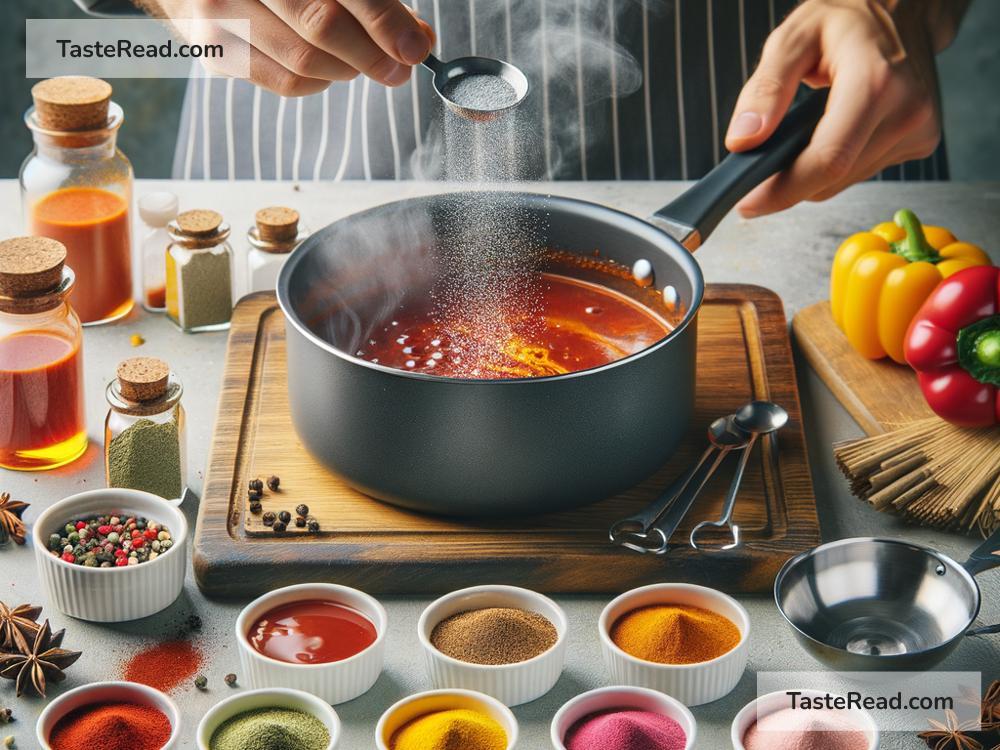The Science of Cooking with Chemical Acceleration: Techniques and Tips
Cooking is not just an art; it’s also a science. Behind every delicious dish lies a world of chemical reactions that transform raw ingredients into flavorful meals. By understanding these reactions, you can take your cooking to the next level. One fascinating way to speed up certain cooking processes is through chemical acceleration. In this article, we’ll explore what this means, how it works, and techniques for applying it in your own kitchen. Don’t worry—this will be explained in simple English, so everyone can enjoy learning about this exciting topic!
What Is Chemical Acceleration?
Chemical acceleration in cooking refers to speeding up natural processes, like breaking down proteins, tenderizing meat, or developing flavor, by using specific ingredients or techniques. Instead of relying on just heat or time, chefs use chemistry to reduce cooking times or enhance food quality.
Think about how lemon juice can “cook” fish when making ceviche. The acidity in the juice denatures the proteins in the fish, achieving a similar effect to heat-based cooking, but at room temperature. This is a perfect example of chemical acceleration in action—using acids, enzymes, or other agents to fast-track changes at a molecular level.
Why Is Chemical Acceleration Useful?
Cooking normally takes time and patience. Slow cooking methods, like braising or fermenting, can take hours or even days. Chemical acceleration allows you to achieve similar results in much less time. Plus, it can improve texture, flavor, or even nutritional content.
For example:
– Tenderizing tough cuts of meat: Acidic marinades or enzymes help break down connective tissue quickly, making even the toughest steaks soft and juicy.
– Baking faster and fluffier cakes: Chemical leavening agents like baking soda release gas bubbles during cooking, speeding up rise times compared to yeast.
– Creating depth of flavor: Processes like caramelization or Maillard reaction can be amplified using techniques that boost reaction rates.
These small scientific tricks open up new possibilities for home cooks and chefs alike.
The Science Behind Chemical Acceleration
To understand chemical acceleration, let’s look at some key components involved:
-
Acids: Ingredients like vinegar, citrus juices, and buttermilk contain acids, which can break down proteins and starches. For example, marinating chicken in yogurt tenderizes it while adding tangy flavor.
-
Bases: Baking soda (a base) reacts with acidic ingredients to produce carbon dioxide. This helps cakes, pancakes, and cookies rise quickly in the oven.
-
Enzymes: Found in foods like pineapple, papaya, and soy sauce, enzymes are natural proteins that speed up reactions. Papain, an enzyme from papaya, can tenderize tough meat almost instantly.
-
Salt: While salt doesn’t accelerate chemical reactions, it can draw out moisture and amplify flavor. Brining meat in salty water makes it juicier and helps it cook more evenly.
-
Heat and time: Combining chemical agents (like acids or enzymes) with high heat or extended cooking ensures more effective acceleration.
In all these cases, understanding how these substances interact with different ingredients allows you to use them creatively in recipes.
Techniques and Tips for Chemical Acceleration in Cooking
Ready to experiment with chemical acceleration in your kitchen? Here are some easy techniques to get started:
1. Quickly Tenderize Meat with Marinades
Use acidic ingredients like lemon juice, vinegar, or yogurt in your marinade. The acids will help break down tough fibers in beef, chicken, or pork. Add spices for extra flavor, and let the meat marinate for at least 30 minutes. For faster tenderizing, rub pineapple or papaya puree directly onto the meat; their enzymes work magic.
2. Speed Up Baking with Leavening Agents
If you’re baking cakes, muffins, or cookies, use baking powder or baking soda. These ingredients release carbon dioxide when mixed with liquids, creating air bubbles for a lighter texture. Just make sure your recipe has an acidic element (like buttermilk or lemon juice) if you’re using baking soda.
3. Enhance Caramelization
Caramelization is the process where sugars break down and transform into rich golden-brown flavor. To speed it up, sprinkle a tiny pinch of baking soda on foods like onions while sautéing. The baking soda raises the pH and accelerates browning.
4. Cook Seafood Without Heat
Try making ceviche by “cooking” fish in citrus juice. The acid denatures the proteins in the fish, giving it a firm, cooked appearance and texture without needing heat.
5. Use Salt for Juicy Results
Brining meat in salty water improves its tenderness and moisture retention. For quicker results, rub coarse salt directly onto chicken or fish and let it sit for 20-30 minutes. Rinse before cooking to avoid over-saltiness.
6. Experiment with Fermented Ingredients
Soy sauce, miso, and buttermilk contain natural enzymes that accelerate flavor development. Use them in marinades, sauces, or batters to enhance taste.
Be a Scientist in the Kitchen
Cooking with chemical acceleration is like conducting an experiment. You can test ideas, try combinations, and watch how small changes make a big difference. Just remember:
– Don’t overdo it—too much acid or enzyme can turn your food mushy or bitter.
– Pair techniques with appropriate recipes. Not every dish benefits from speeding things up.
– Learn from your mistakes; cooking science is all about trial and error.
Conclusion
Chemical acceleration is a fantastic way to explore the science of cooking. By using acids, bases, enzymes, and simple techniques, you can unlock new textures and flavors while saving time. Whether you’re baking the fluffiest cake, caramelizing onions quickly, or tenderizing meat for a barbecue, understanding the basics of food chemistry gives you tools to become a better chef.
So next time you step into your kitchen, think like a scientist and get creative with chemical acceleration. Your taste buds (and your dinner guests) will thank you!


